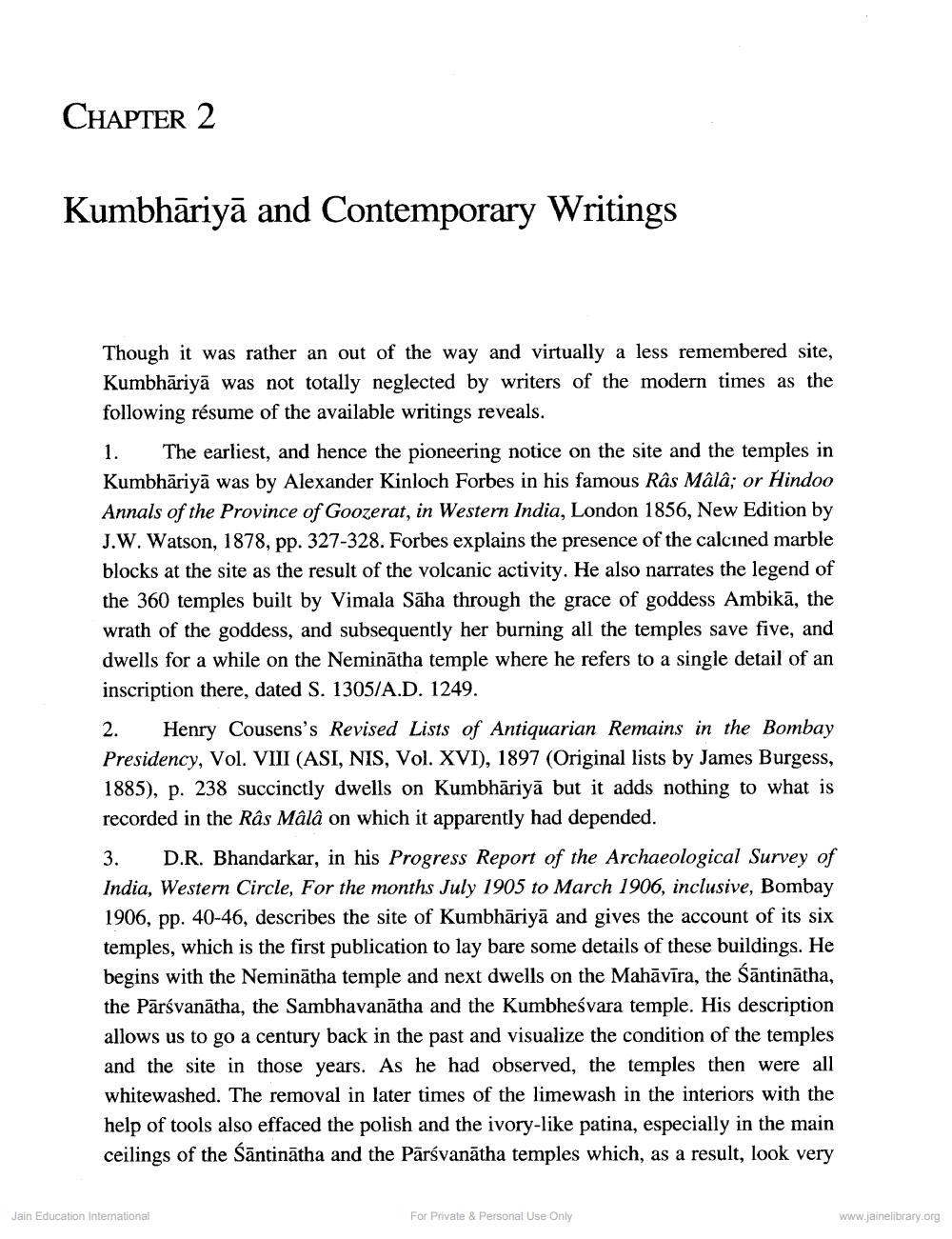________________
CHAPTER 2
Kumbhāriyā and Contemporary Writings
Though it was rather an out of the way and virtually a less remembered site, Kumbhāriyā was not totally neglected by writers of the modern times as the following résume of the available writings reveals. 1. The earliest, and hence the pioneering notice on the site and the temples in Kumbhāriyā was by Alexander Kinloch Forbes in his famous Râs Mâlâ; or Hindoo Annals of the Province of Goozerat, in Western India, London 1856, New Edition by J.W. Watson, 1878, pp. 327-328. Forbes explains the presence of the calcined marble blocks at the site as the result of the volcanic activity. He also narrates the legend of the 360 temples built by Vimala Sāha through the grace of goddess Ambikā, the wrath of the goddess, and subsequently her burning all the temples save five, and dwells for a while on the Neminātha temple where he refers to a single detail of an inscription there, dated S. 1305/A.D. 1249.
2. Henry Cousens's Revised Lists of Antiquarian Remains in the Bombay Presidency, Vol. VIII (ASI, NIS, Vol. XVI), 1897 (Original lists by James Burgess, 1885), p. 238 succinctly dwells on Kumbhāriyā but it adds nothing to what is recorded in the Râs Mâlâ on which it apparently had depended.
3. D.R. Bhandarkar, in his Progress Report of the Archaeological Survey of India, Western Circle, For the months July 1905 to March 1906, inclusive, Bombay 1906, pp. 40-46, describes the site of Kumbhāriyā and gives the account of its six temples, which is the first publication to lay bare some details of these buildings. He begins with the Neminātha temple and next dwells on the Mahāvīra, the Säntinātha, the Pārsvanātha, the Sambhavanātha and the Kumbheśvara temple. His description allows us to go a century back in the past and visualize the condition of the temples and the site in those years. As he had observed, the temples then were all whitewashed. The removal in later times of the limewash in the interiors with the help of tools also effaced the polish and the ivory-like patina, especially in the main ceilings of the Sāntinātha and the Pārsvanātha temples which, as a result, look very
Jain Education International
For Private & Personal Use Only
www.jainelibrary.org




